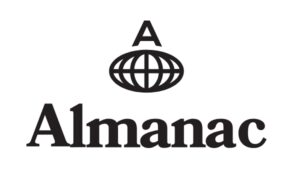Matthieu Gagnon, Vice-President
A couple of weeks ago, after the fatality on Innes Boulevard, a journalist reached out to our association to get a community perspective on the collision, which led to this piece by that journalist on the road safety issues of stroads like Innes. I wanted to take the opportunity to present the other problems with our community’s main stroad: St-Joseph Boulevard.
St-Joseph is currently what is commonly defined by Strong Towns as a stroad. A stroad is a hybrid of a street and a road. A street is a platform where amenities like businesses and residences can be accessed. The opposite of a street is a road. A road is built to maximize connectivity between two places. A stroad tries to do both at the same time. Stroads try to do both but fail. A stroad will have relatively faster speeds than a street, making it dangerous for people turning in and out to access amenities. The high speeds also require traffic lights to make those turns safe, which slows down traffic. Stroads are dangerous for drivers and people outside of cars, and also create a loud and polluted environment. If you haven’t noticed the issues with St-Joseph, I’m sorry to burst your bubble, as you’re unlikely to be able to unsee it.
I picked a semi-random slice of St-Joseph on Google Street View. In that screenshot, you can see that most of the space is dedicated to cars. Curb to curb, the roadway is about 14m. Another 17m is dedicated to parking lots on the south and 29m on the north. The buildings are 11 to 14 meters deep on the south side, and 15 to 20 meters on the north side. That means that over 50% of the space is dedicated to cars between the backs of the buildings, and 26% is dedicated to buildings. The current setup leaves little room for businesses or housing. The image also shows a disturbing lack of people. The little patio is deserted. The sidewalks are empty. Even the parking lots have just enough cars for the employees of those businesses. Those businesses include several restaurants that seem empty at noon on a clear weekday before implementing hybrid work for federal workers. St-Joseph does not work well for people, especially business owners.

Based on the amount of space given to cars, driving on St-Joseph should be great. However, according to Google Maps, if I leave Bob MacQuarrie at noon, it would take me approximately 7 minutes to reach Place D’Orléans, which is 3.3 km away. This average is just over 28 km/h, a reasonable speed for an e-bike. On weekends, the estimated trip is up to 12 minutes or 16.5 km/h, a leisurely pace on a conventional bike. St-Joseph does not work well for driving either. There’s also no space to ride a bike, and the numerous conflict points with cars make it dangerous for pedestrians. Pedestrians are also very exposed to the elements since there is no shade or anything to break the wind. Travelling on St-Joseph does not work for anyone.
Stroads like St-Joseph are also very expensive to build and maintain, so they should bring in more revenue for the city than other developments. Let’s look at a few properties on St-Joseph to see how they compare to other properties in Orléans using MPAC’s tool. Since costs for the city scale with land area, and municipal taxes are based on property value, value per acre will be used to compare properties. The plaza in the image above, with the patio, is valued at approximately $3 million and occupies 0.83 acres, resulting in a value of $3.6 million per acre. The plaza with Jean Coutu has a lot size of 1.55 acres and a value of approximately $5 million, which translates to $ 3.2 million per acre. A larger development, the Jardin Royal Garden Retirement Home, has a value of $5.2 million per acre. To compare, my single-family home in Convent Glen North is valued at $3.2 million per acre. A house on Harvest Crescent (a townhouse) is valued at $7.9 million per acre. Properties on St-Joseph have a value per acre that is in line with single-family homes. Given that tax ratios for commercial spaces along St-Joseph would be around 1.5-2, depending on the specific development, bringing in about double the revenue despite requiring much more road and storm sewer infrastructure.
In short, St-Joseph is currently a bad place to do business, a bad route on which to travel, and does not bring in a lot of tax revenue. If we want our neighbourhood to prosper, we need that to change. If the Orléans Corridor Secondary Plan is implemented, St-Joseph Boulevard will significantly change over the next twenty years. Zoning and transportation priorities outlined in the plan aim to shift the priority from moving cars to people and seek to encourage a development pattern significantly different from what it is today. This plan gives small businesses a better chance to succeed while providing us with a better environment in which to enjoy their services. It will also go a long way towards improving our city’s finances by reducing the infrastructure needed to move people, provide more housing, and offer more services.
I look forward to St-Joseph becoming a proper street.













